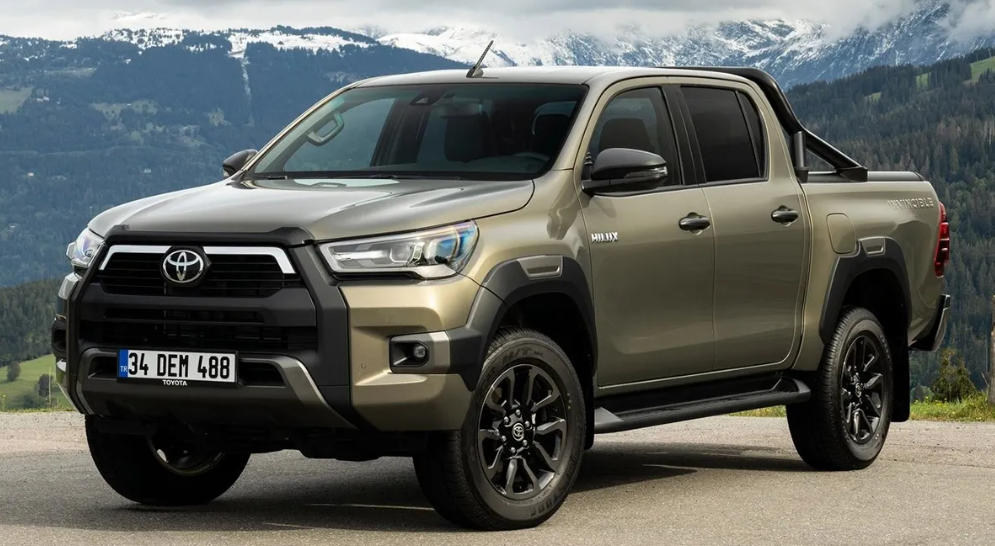The Toyota Hilux has long been a cornerstone of Australia’s automotive landscape, renowned for its rugged durability, versatility, and ability to tackle everything from urban worksites to outback adventures. As one of Australia’s best-selling vehicles, the 2025 Toyota Hilux continues to uphold this legacy with a range of variants, updated technology, and robust performance.
This article dives into the pricing, fuel efficiency, and power specifications of the 2025 Hilux, tailored for Australian buyers seeking a reliable ute for work, recreation, or both. We’ll explore the model lineup, engine options, fuel economy, and performance capabilities, providing a comprehensive guide for those considering this iconic vehicle.
Overview of the 2025 Toyota Hilux
The Toyota Hilux remains a top contender in Australia’s competitive ute market, with 42,071 units delivered in the first nine months of 2024, securing its place among the country’s best-selling vehicles. For 2025, Toyota has kept the Hilux largely unchanged following a significant facelift in 2024, which introduced mild-hybrid technology and styling updates.
The lineup spans 29 variants, from the entry-level Workmate to the flagship GR Sport, catering to a wide range of buyers, including tradies, off-road enthusiasts, and families. With prices ranging from $26,475 to $74,310 before on-road costs, the Hilux offers options for various budgets and needs.
The 2025 Hilux is available in single-cab, extra-cab, and double-cab configurations, with both 4×2 and 4×4 drivetrains. It comes with a choice of petrol, diesel, and diesel-electric mild-hybrid powertrains, ensuring flexibility for different driving conditions.
The vehicle’s reputation for reliability is backed by a five-year, unlimited-kilometre warranty, extendable to seven years for the drivetrain when serviced through Toyota’s dealer network. Capped-price servicing ranges from $245 to $290 per visit for the first three years or 60,000 km, making maintenance predictable.
Pricing: Affordable to Premium Options

The 2025 Toyota Hilux offers a broad price range to suit various budgets, starting at $26,475 for the base Workmate 4×2 Single Cab Cab-Chassis and topping out at $74,310 for the GR Sport Two-Tone 4×4 Double Cab. Prices exclude on-road costs such as stamp duty, registration, and dealer delivery charges, which can add several thousand dollars depending on the state or territory. Below is a breakdown of key variants and their Manufacturer’s Suggested Retail Prices (MSRP):
-
Workmate 4×2 Single Cab Cab-Chassis (2.7L Petrol, Manual): $26,475
-
Workmate 4×4 Double Cab Pick-Up (2.4L Diesel, Automatic): $44,035
-
SR 4×2 Extra Cab Cab-Chassis (2.8L Diesel, Automatic): $46,665
-
SR5 4×4 Double Cab Pick-Up (2.8L Diesel, Automatic with V-Active): $63,260
-
Rogue 4×4 Double Cab Pick-Up (2.8L Diesel, Automatic with V-Active): $70,760
-
GR Sport 4×4 Double Cab Pick-Up (2.8L Diesel, Automatic): $74,310
The Workmate is the most affordable, designed for basic workhorse duties, while the SR and SR5 offer a balance of capability and comfort, with the SR5 being the most popular variant historically. The Rogue and GR Sport cater to buyers seeking premium features and off-road prowess, with the GR Sport boasting Dakar-inspired styling and enhanced suspension. Optional paint finishes, such as premium or two-tone black roof colors, add $675 or $1,000, respectively. For the best deals, buyers can explore Toyota’s network or third-party platforms like CarExpert, which connect customers with dealers offering competitive pricing.
Fuel Efficiency: Balancing Economy and Performance
Fuel efficiency is a critical consideration for Australian buyers, given the diverse driving conditions ranging from city commutes to long highway hauls and off-road treks. The 2025 Hilux offers a range of powertrains, with fuel consumption varying by engine, drivetrain, and transmission. The introduction of V-Active Technology (a 48-volt mild-hybrid system) on select SR, SR5, and Rogue variants has improved efficiency, particularly in stop-start traffic and during deceleration, by regenerating energy to reduce fuel use. Below are the key fuel economy figures (combined cycle, ADR tested):
-
2.7L Petrol (4×2, Workmate): 10.4L/100km
-
2.4L Turbo-Diesel (4×2 and 4×4, Workmate): 7.2–8.1L/100km
-
2.8L Turbo-Diesel (4×2 and 4×4, SR, SR5, Rogue): 7.2–8.0L/100km
-
2.8L Turbo-Diesel with V-Active (4×4, SR, SR5, Rogue): 7.2L/100km
-
**2.8stru: 7.4L/100km
The mild-hybrid variants achieve the best fuel economy at 7.2L/100km, thanks to the 48V system, which adds up to 8.5kW and 65Nm of torque during acceleration and regenerates energy during braking. Real-world testing, such as the What Car? True MPG test, suggests the 2.8L diesel can achieve up to 35.0mpg (approximately 8.1L/100km) in mixed conditions, though city driving may increase consumption to around 10L/100km. The 80-litre fuel tank ensures a decent range, especially for diesel models, which can cover over 1,000 km on a single tank under optimal conditions.
The Hilux’s fuel efficiency is competitive within the ute segment. For comparison, the Isuzu D-Max and Mazda BT-50 also achieve 7.2L/100km with their 2.0L bi-turbo diesel engines, while the Ford Ranger’s 3.0L V6 diesel consumes 8.4L/100km. The Hilux’s diesel variants, particularly those with V-Active, are well-suited for Australian buyers prioritizing long-term fuel savings for work or long-distance travel. However, the petrol Workmate is less efficient, making it better suited for budget-conscious buyers with shorter commutes.
Power Specs: Engines for Every Task

The 2025 Hilux offers four engine options, each tailored to different needs, from basic utility to high-performance off-roading. All engines are paired with either a five-speed manual (petrol) or six-speed manual/automatic (diesel), with the automatic offering paddle shifters on higher trims like the GR Sport. Here’s a detailed look at the powertrains:
-
2.7L Four-Cylinder Petrol (Workmate 4×2)
-
Power: 122kW at 5,200rpm
-
Torque: 245Nm at 4,000rpm
-
Transmission: 5-speed manual or 6-speed automatic
-
Best for: Budget buyers and light-duty urban use. This naturally aspirated engine is reliable but lacks the torque of diesel options, limiting its towing capacity to 2,500kg (braked).
-
-
2.4L Four-Cylinder Turbo-Diesel (Workmate 4×2 and 4×4)
-
Power: 110kW at 3,400rpm
-
Torque: 400Nm at 1,600–2,000rpm
-
Transmission: 6-speed manual or automatic
-
Best for: Workhorse duties with solid torque for towing (up to 3,500kg for 4×4 models) and decent fuel efficiency.
-
-
2.8L Four-Cylinder Turbo-Diesel (SR, SR5, Rogue)
-
Power: 150kW at 3,400rpm
-
Torque: 500Nm (auto) at 1,600–2,800rpm, 420Nm (manual) at 1,400–3,400rpm
-
Transmission: 6-speed manual or automatic (V-Active mild-hybrid on select models)
-
Best for: Versatile performance for work and recreation, with strong towing capacity (3,500kg for 4×4, 2,800kg for 4×2) and improved efficiency with V-Active.
-
-
2.8L Four-Cylinder Turbo-Diesel (GR Sport)
-
Power: 165kW at 3,400rpm
-
Torque: 550Nm at 1,600–2,800rpm
-
Transmission: 6-speed automatic
-
Best for: Off-road enthusiasts and those seeking premium performance. The GR Sport’s enhanced power, wider track, and Dakar-inspired suspension make it ideal for rugged terrain.
-
The 2.8L diesel with V-Active, available on SR, SR5, and Rogue, uses a 48-volt motor-generator to boost low-end torque and improve fuel economy, delivering smoother acceleration and quieter engine starts. The GR Sport’s 10% power boost and sport-tuned suspension elevate it as Australia’s most performance-focused diesel Hilux, with a braked towing capacity of 3,500kg and a payload range of 780–1,310kg, depending on the variant.
Features and Capabilities
The 2025 Hilux is packed with features to enhance functionality and comfort. Standard equipment on the Workmate includes auto headlights, adaptive cruise control, and a reversing camera, while the SR5 adds dual-zone climate control, an 8-inch touchscreen with Apple CarPlay and Android Auto, and advanced safety features like blind-spot monitoring and lane departure alert. The GR Sport includes heated front seats, a JBL sound system, and a panoramic view monitor for off-road precision.
Off-road, the Hilux excels with a 700mm wading depth, 29-degree approach angle (23 degrees for base 4×2 petrol), and 20–27-degree departure angle. The GR Sport’s 135mm wider front track and monotube shocks enhance handling on rough terrain, while rock rails and skid plates provide protection. Towing capacity is class-leading at 3,500kg for 4×4 models, with payload capacities ranging from 780kg to 1,310kg, making the Hilux a versatile workhorse.
Why Choose the 2025 Toyota Hilux?
The 2025 Toyota Hilux remains a top choice for Australian buyers due to its proven reliability, extensive variant lineup, and adaptability to diverse needs. While competitors like the Ford Ranger and Isuzu D-Max offer advanced tech, the Hilux’s durability, strong resale value, and widespread dealer support make it a safe bet. The mild-hybrid system adds efficiency, and the GR Sport appeals to those wanting a rugged, performance-oriented ute. Whether for tradies, adventurers, or families, the Hilux delivers a balance of price, mileage, and power that’s hard to beat.
For those considering a purchase, contact your local Toyota dealer for driveaway pricing and accessory options, such as bull bars and roof racks, to customize your Hilux. With its blend of practicality and performance, the 2025 Hilux is ready to tackle Australia’s toughest challenges.

